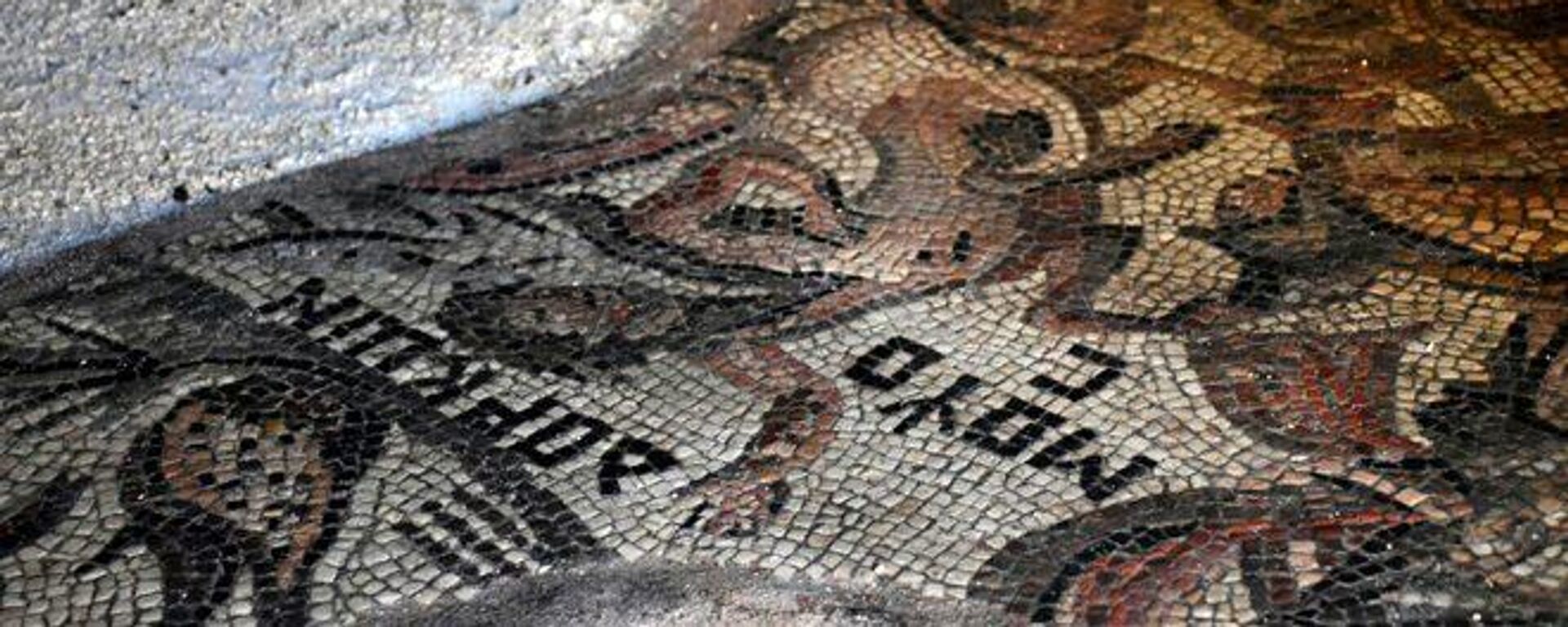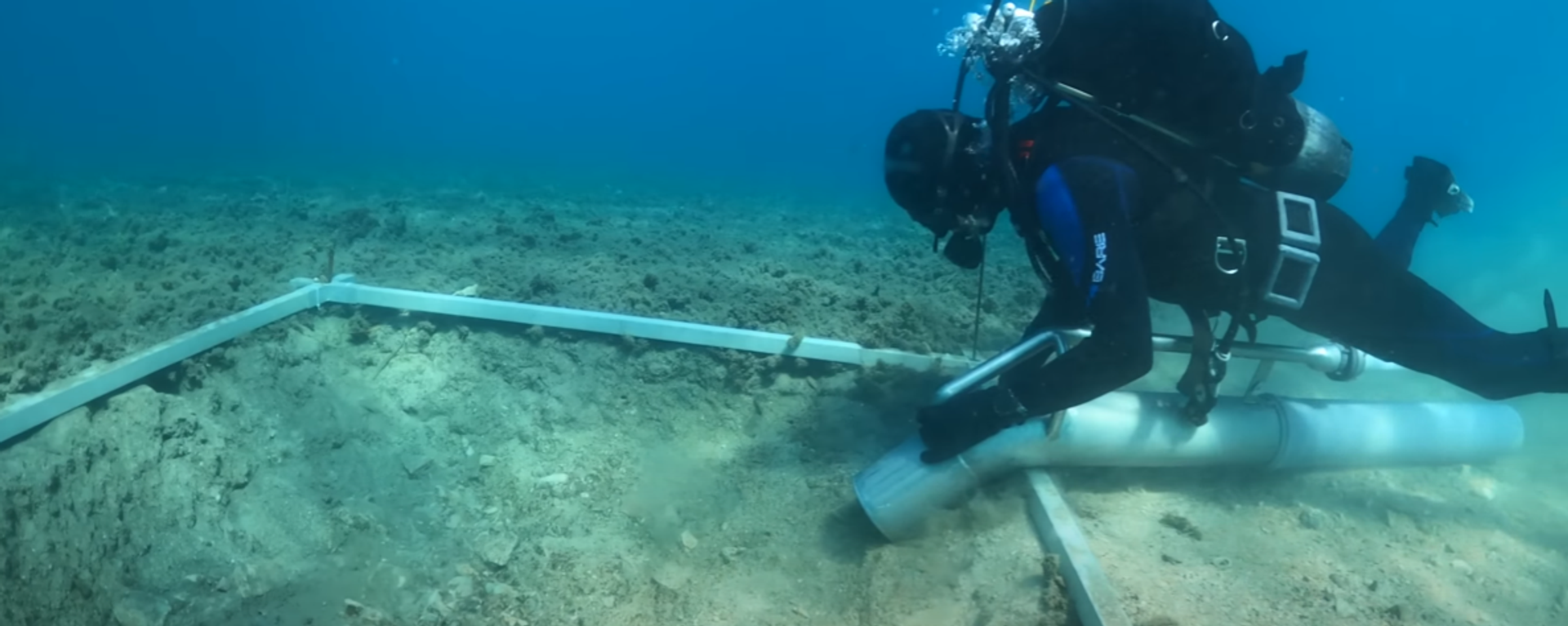https://sputnikglobe.com/20230715/3000-year-old-condor-ceramic-piece-found-inside-sealed-peruvian-temple-1111883227.html
3,000-Year-Old Condor Ceramic Piece Found Inside Sealed Peruvian Temple
3,000-Year-Old Condor Ceramic Piece Found Inside Sealed Peruvian Temple
Sputnik International
Archaeologists in Peru have made an exciting discovery within a sealed corridor in a 3,000-year-old temple complex. The ceramic piece is adorned with what appears to be a condor's head and wings.
2023-07-15T00:41+0000
2023-07-15T00:41+0000
2023-07-15T00:39+0000
beyond politics
science & tech
peru
archeology
history
ancient history
lima
https://cdn1.img.sputnikglobe.com/img/07e7/07/0e/1111883066_0:61:640:421_1920x0_80_0_0_3cb750d58fdfc0b1bbb4fc647ed154dc.jpg
Archaeologists in Peru have made an exciting discovery within a sealed corridor in a 3,000-year-old temple complex: a roughly 37-pound large ceramic piece adorned with appears to be a condor's head and wings.The corridor has since been named "the condor's passageway" and was pinpointed by officials in addition to a ceramic bowl found in the corridor last May, when archaeologists initially discovered the entrance.Lead archaeologist and Stanford anthropology professor John Rick described the find as something that has been "frozen in time." The condor holds great significance in ancient Andean cultures, symbolizing power and health as it is associated with the sun deity and believed to be the ruler of the upper world.To explore the "condor's passageway," the professor's team used robots equipped with cameras to navigate the debris that had accumulated in the corridor since a flood in 1945. The approach helped reduce the risk of damaging or collapsing the ancient structure.Situated about 190 miles northeast of Lima, Peru, the ceramic finds were made at the Chavin de Huantar archaeological site - home to the Chavin culture that flourished between 1,500 and 550 BC. Rick stated that a significant portion of the temple complex has yet to be excavated.
https://sputnikglobe.com/20230623/third-stunning-roman-mosaic-unearthed-at-syrias-al-rastan-archaeological-site-1111429806.html
https://sputnikglobe.com/20230510/video-7000-year-old-road-discovered-under-croatian-waters-1110230187.html
peru
lima
Sputnik International
feedback@sputniknews.com
+74956456601
MIA „Rossiya Segodnya“
2023
News
en_EN
Sputnik International
feedback@sputniknews.com
+74956456601
MIA „Rossiya Segodnya“
Sputnik International
feedback@sputniknews.com
+74956456601
MIA „Rossiya Segodnya“
ancient archeology, peru archeological sites, peruvian temple, peruvian famous culture sites, chavin culture, what is chavin de huantar, americas preinca history
ancient archeology, peru archeological sites, peruvian temple, peruvian famous culture sites, chavin culture, what is chavin de huantar, americas preinca history
3,000-Year-Old Condor Ceramic Piece Found Inside Sealed Peruvian Temple
The mystery corridor, which was located in the southern portion of the temple, had been sealed due to structural weakness; however, it has since provided valuable insights into the early days of the Chavin civilization.
Archaeologists in Peru have made an exciting discovery within a sealed corridor in a 3,000-year-old temple complex: a roughly 37-pound large ceramic piece adorned with appears to be a condor's head and wings.
The corridor has since been named "the condor's passageway" and was pinpointed by officials in addition to a ceramic bowl found in the corridor last May, when archaeologists initially discovered the entrance.
Lead archaeologist and Stanford anthropology professor John Rick described the find as something that has been "frozen in time." The condor holds great significance in ancient Andean cultures, symbolizing power and health as it is associated with the sun deity and believed to be the ruler of the upper world.
To explore the "condor's passageway," the professor's team used robots equipped with cameras to navigate the debris that had accumulated in the corridor since a flood in 1945. The approach helped reduce the risk of damaging or collapsing the ancient structure.
Situated about 190 miles northeast of Lima, Peru, the ceramic finds were made at the Chavin de Huantar archaeological site - home to the Chavin culture that flourished between 1,500 and 550 BC. Rick stated that a significant portion of the temple complex has yet to be excavated.
The site was designated a UNESCO World Heritage site in 1985 for its impressive appearance, featuring terraces, squares, and structures adorned with zoomorphic ornamentation.
The Chavin civilization is renowned for its advanced art, often depicting birds and felines. Their roots trace back to the earliest sedentary farming communities in the Peruvian Andes, more than 2,000 years prior to the ascent of the Inca Empire.




